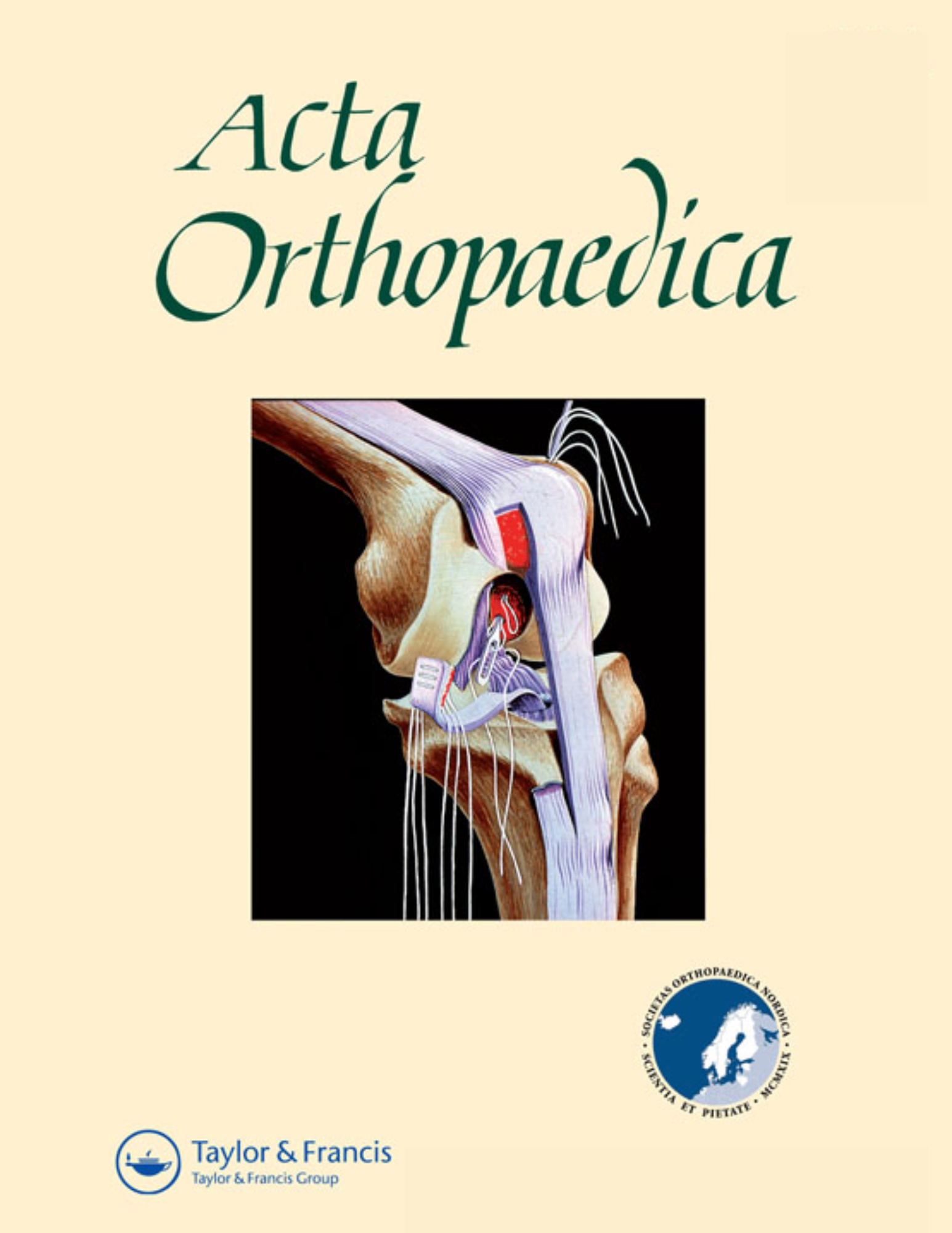
Local infiltration analgesia with ropivacaine does not reduce pain following THA

Local infiltration analgesia with ropivacaine does not reduce pain following THA
Perioperative local infiltration anesthesia with ropivacaine has no effect on postoperative pain after total hip arthroplasty
Acta Orthop. 2015 Dec;86(6):654-8Did you know you're eligible to earn 0.5 CME credits for reading this report? Click Here
Synopsis
116 patients scheduled to undergo total hip arthroplasty (THA) were randomized to undergo the procedure with or without local infiltration analgesia (LIA) including 0.2% ropivacaine. The purpose of this study was to assess the effectiveness of LIA with ropivacaine (in addition to a multimodal analgesic regimen) on postoperative pain and opioid requirement following THA. The results of this study demonstrated that LIA with ropivacaine did not provide additional analgesic effect and that the consumption of opioids over the first postoperative day was comparable between groups.
Was the allocation sequence adequately generated?
Was allocation adequately concealed?
Blinding Treatment Providers: Was knowledge of the allocated interventions adequately prevented?
Blinding Outcome Assessors: Was knowledge of the allocated interventions adequately prevented?
Blinding Patients: Was knowledge of the allocated interventions adequately prevented?
Was loss to follow-up (missing outcome data) infrequent?
Are reports of the study free of suggestion of selective outcome reporting?
Were outcomes objective, patient-important and assessed in a manner to limit bias (ie. duplicate assessors, Independent assessors)?
Was the sample size sufficiently large to assure a balance of prognosis and sufficiently large number of outcome events?
Was investigator expertise/experience with both treatment and control techniques likely the same (ie.were criteria for surgeon participation/expertise provided)?
Yes = 1
Uncertain = 0.5
Not Relevant = 0
No = 0
The Reporting Criteria Assessment evaluates the transparency with which authors report the methodological and trial characteristics of the trial within the publication. The assessment is divided into five categories which are presented below.
3/4
Randomization
2/4
Outcome Measurements
4/4
Inclusion / Exclusion
4/4
Therapy Description
4/4
Statistics
Detsky AS, Naylor CD, O'Rourke K, McGeer AJ, L'Abbé KA. J Clin Epidemiol. 1992;45:255-65
The Fragility Index is a tool that aids in the interpretation of significant findings, providing a measure of strength for a result. The Fragility Index represents the number of consecutive events that need to be added to a dichotomous outcome to make the finding no longer significant. A small number represents a weaker finding and a large number represents a stronger finding.
Why was this study needed now?
Pain management is a primary concern following total hip arthroplasty (THA) as it can affect early postoperative mobilization and rehabilitation. Local infiltration analgesia (LIA) is commonly used as part of a multi-modal analgesia treatment for post-operative pain. However, trials investigating the efficacy LIA with ropivacaine as a part of a multimodal analgesia treatment have been unable to identify additional benefits of its use following THA. The aim of this study was to determine the analgesic effects of LIA with 0.2% ropivacaine through the measurement of pain scores and opioid consumption over the first postoperative day.
What was the principal research question?
In patients undergoing total hip arthroplasty, did single-shot local infiltration analgesia with 0.2% ropivacaine combined with a multimodal analgesic regimen reduce pain and opioid consumption in comparison to control patients not receiving LIA after 48 hours?
What were the important findings?
- Pain during mobilization in the PACU was not significantly different between groups (3 in both groups , p=0.7). Pain scores during mobilization on the first postoperative day were similar between groups (4 in both groups, p=0.3).
- The median opioid consumption in the PACU was similar between groups. (0 mg [Range: 0-3.1] and 0 mg [Range: 0-5] in the placebo and ropivacaine groups respectively p=0.9). Total oxycodone consumption on the first postoperative day was 20 mg [Range: 10-30] in both groups (p=0.4).
- The median number of hours mobilized was 9 in the placebo group [Range: 7-12] and 9 in the ropivacaine group [Range: 6-11] (p=0.7). The median length of hospital stay was 2 and 3 for the placebo and ropivacaine groups respectively (p=0.5). No statistical significance was noted.
What should I remember most?
Local infiltration analgesia (LIA) with 0.2% ropivacaine did not provide a significant analgesic effect following THA when added to a multimodal analgesic regimen (acetaminophen, NSAID, and glucocorticoid). Additionally, local infiltration analgesia (LIA) with 0.2% ropivacaine did not reduce postoperative opioid consumption or mobilization pain scores.
How will this affect the care of my patients?
The results of this study indicate that local infiltration analgesia with 0.2% ropivacaine did not provide an additional analgesic effect following THA during mobilization in the post-anesthesia care unit (PACU) or mobilization one day postoperatively. The investigators noted that several similarly structured RCTs examining the effect of LIA following THA have used different pain treatment modalities, further complicating interpretation and comparison of this study's results. Further studies using larger population sizes and other validated and objective pain outcomes are warranted to substantiate current findings.
Learn about our AI Driven
High Impact Search Feature
Our AI driven High Impact metric calculates the impact an article will have by considering both the publishing journal and the content of the article itself. Built using the latest advances in natural language processing, OE High Impact predicts an article’s future number of citations better than impact factor alone.
Continue



 LOGIN
LOGIN

Join the Conversation
Please Login or Join to leave comments.